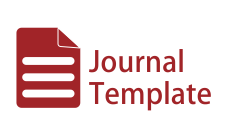The ideal model of waqf financing
DOI:
https://doi.org/10.21580/jiemb.2020.2.2.8083Keywords:
waqf financing, waqf asset, waqf management, central javaAbstract
Purpose – The aim of this research is to find out the financing mechanism or the waqf assets funding done by nazhir and to find the ideal mechanism for the development of waqf assets.
Method – This is a qualitative research with a case study approach. The research object was selected using purposive sampling, namely nazhir waqf in Central Java which manages productive waqf including: Sultan Agung Waqf Foundation (YBWSA), Semarang Grand Mosque Management Agency (BPMAS), and Pekalongan City Muslimin Foundation (YMKP).
Result – This study found that the Sultan Agung Waqf Foundation (YBWSA) implements a mechanism for waqf financing in the form of public funding, government assistance, murabahah, and ijarah. BPMAS implements a waqf financing mechanism in the form of donations & alms, government assistance, ijarah, and cash waqf. Meanwhile, YMKP provides financing for the development of its waqf assets in the form of government assistance and qardul hasan.
Implication – This study can be used by government, policy maker, business party, or scholar to create an optimal and ideal mechanism in developing waqf assets.
Originality – In the past, studies of waqf asset management were performed in the context of middle east, mostly Kuwait. This study provides waqf asset management in context of South East region.
Downloads
Downloads
Published
Issue
Section
License
Authors who publish with this journal agree to the following terms:
Authors retain copyright and grant the journal right of first publication with the work simultaneously licensed under a Creative Commons Attribution-ShareAlike 4.0 International License that allows others to share the work with an acknowledgement of the work's authorship and initial publication in this journal.
Authors are able to enter into separate, additional contractual arrangements for the non-exclusive distribution of the journal's published version of the work (e.g., post it to an institutional repository or publish it in a book), with an acknowledgement of its initial publication in this journal.
Authors are permitted and encouraged to post their work online (e.g., in institutional repositories or on their website) prior to and during the submission process, as it can lead to productive exchanges, as well as earlier and greater citation of published work (See The Effect of Open Access).



